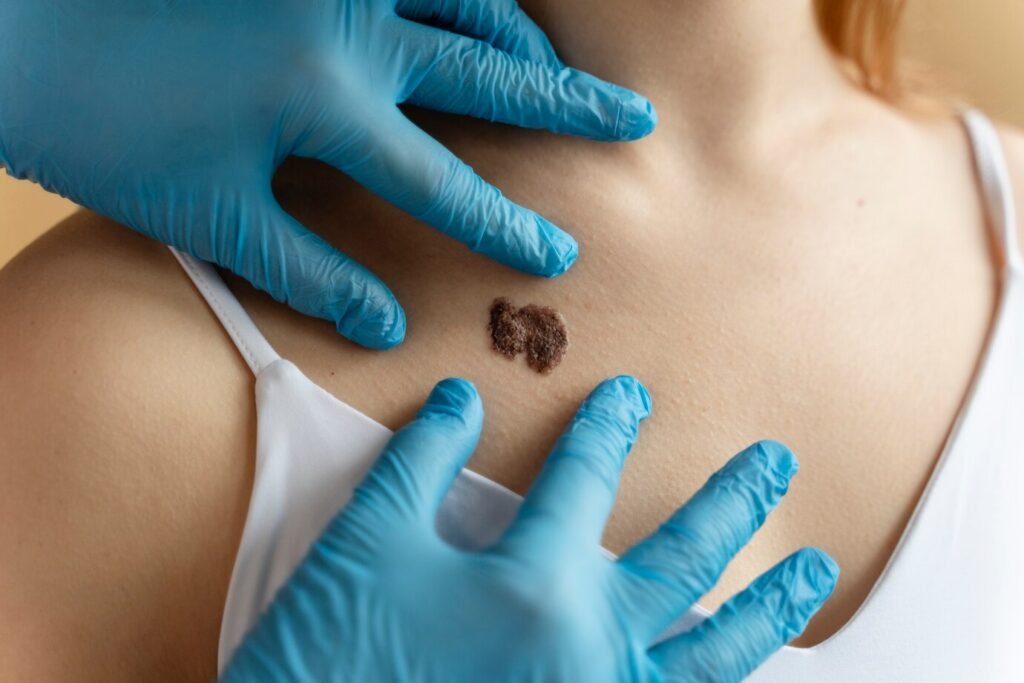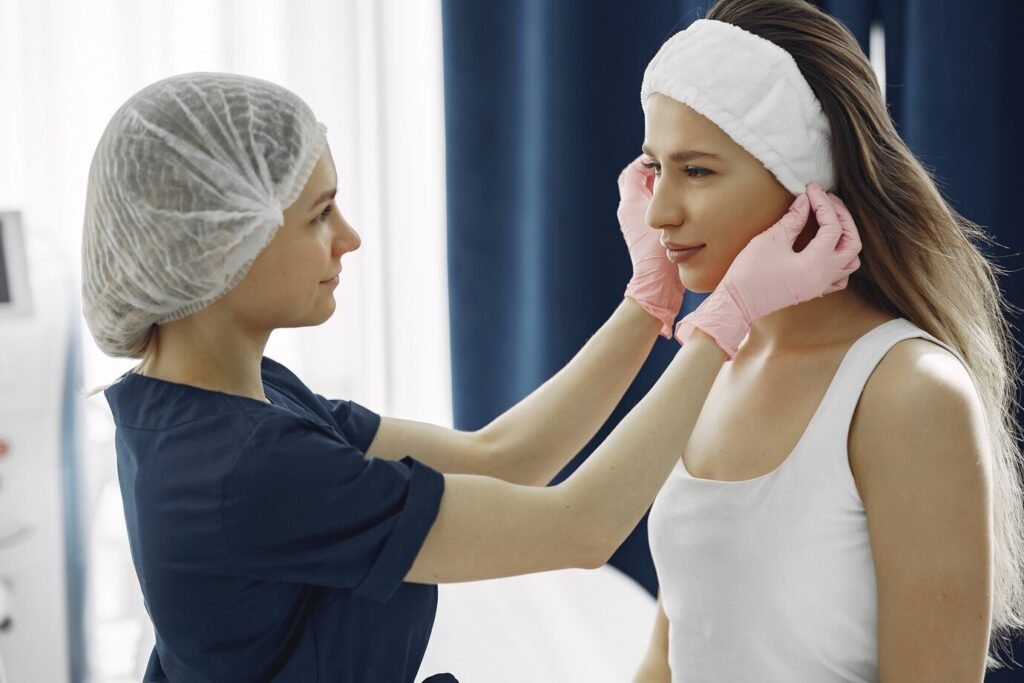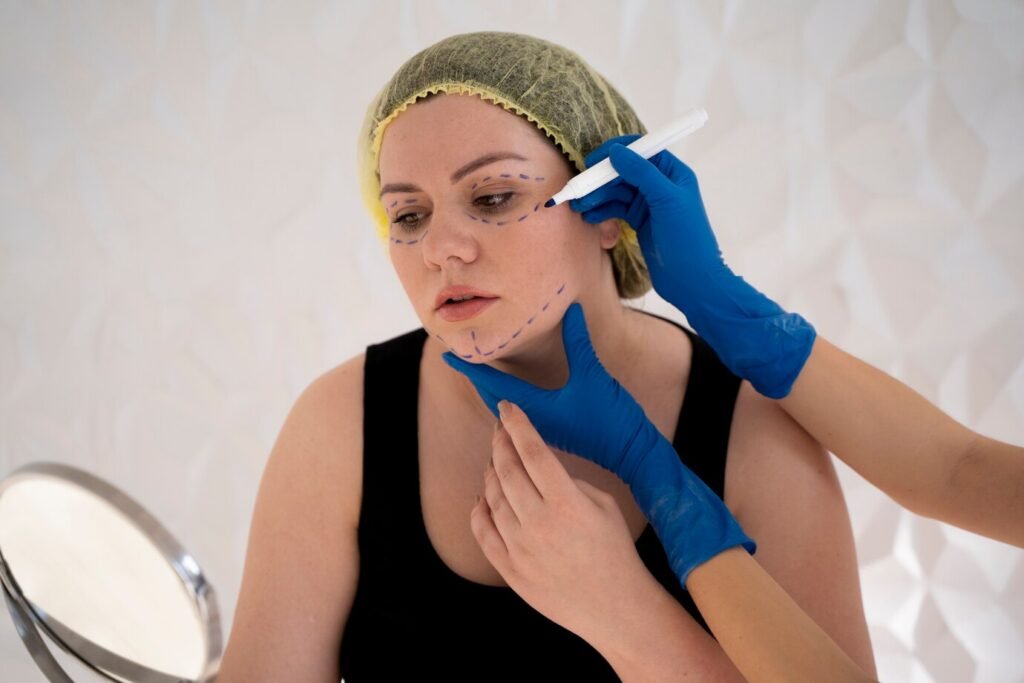Introduction
This article provides guidance on skin cancer treatment. Skin cancer is a prevalent concern, with millions diagnosed each year. As awareness increases, so does the importance of understanding the treatment options available. This article aims to provide a detailed overview of skin cancer treatment, offering insights into various methods, their effectiveness, and what patients can expect during their journey. By the end of this guide, you will have a clearer understanding of skin cancer treatment options, empowering you to make informed decisions for yourself or your loved ones.

Table of Contents
Understanding Skin Cancer
What is Skin Cancer?
Skin cancer occurs when skin cells begin to grow uncontrollably. It is primarily caused by exposure to ultraviolet (UV) radiation from the sun or tanning beds. There are three main types of skin cancer:
- Basal Cell Carcinoma (BCC) is recognized as the most prevalent form of skin cancer, often manifesting as a small, shiny bump on the surface of the skin. Alternatively, it may present itself as a sore that fails to heal over time, raising concerns for those who notice these changes. Due to its commonality, it is essential for individuals to be aware of BCC and monitor any skin alterations that fit this description.
- Squamous Cell Carcinoma (SCC) is another type of skin cancer, and it is characterized by different symptoms. This form of cancer may appear as a red, scaly patch, or it may present itself as a sore that has a tendency to bleed and form crusts. It is important for individuals to pay attention to such warning signs, as early detection can play a significant role in effective skin cancer treatment.
- Melanoma stands out as the least common yet the most perilous type of skin cancer. This aggressive form can emerge from existing moles or may develop as new and unusual growths on the skin. Because of its potential to spread quickly and cause serious health issues, recognizing the signs of melanoma is critical for ensuring timely medical intervention.
Risk Factors
Understanding the risk factors associated with skin cancer can help in prevention and early detection. Key risk factors include:
- Skin Type: Fair-skinned individuals are at higher risk.
- Age: The risk increases with age.
- Family History: A family history of skin cancer significantly raises your risk.
- Sun Exposure: Prolonged exposure to UV rays is a major contributing factor.
Skin Cancer Treatment Options
1. Surgical Skin Cancer Treatment
Surgery is often the first line of defense against skin cancer. The goal is to remove the cancerous tissue completely. Common surgical options include:
- Excisional Surgery involves the careful removal of the tumor along with a surrounding margin of healthy skin tissue. This procedure is performed to ensure that not only the tumor itself is eliminated, but also that there is a sufficient buffer of healthy skin that helps reduce the risk of any remaining cancerous cells.
- Mohs Surgery is a specialized surgical technique that focuses on the meticulous removal of cancerous skin, layer by layer. During this procedure, each individual layer of skin is carefully excised and examined under a microscope for the presence of cancer cells. This process continues until there are no further cancer cells detected in the remaining tissue. One of the significant advantages of Mohs surgery is its high success rate in completely removing skin cancers. It is particularly effective for treating two common types of skin cancer, known as basal cell carcinoma (BCC) and squamous cell carcinoma (SCC). By ensuring complete removal of cancerous tissue through this precise method, Mohs surgery minimizes the chances of recurrence and preserves as much healthy skin as possible surrounding the affected area.

2. Non-Surgical Skin Cancer Treatments
For patients who may not be candidates for surgery or prefer alternative methods, several non-surgical treatments are available:
- Radiation Therapy: This well-established method involves the use of high-energy rays, such as X-rays or gamma rays, to effectively target and destroy cancer cells within the body. Radiation therapy is frequently utilized for patients suffering from non-melanoma skin cancers, especially those who are unable to undergo surgical procedures due to various reasons, such as their overall health or the specific nature of their cancer. By focusing these powerful rays on the affected areas, this skin cancer treatment can significantly reduce the size of tumors and can sometimes lead to complete remission of the cancer.
- Topical Chemotherapy: In this skin cancer treatment approach, specialized creams or gels that contain potent cancer-fighting medications are applied directly onto the skin’s surface. This localized method of treatment is primarily employed for superficial skin cancers, allowing the medication to penetrate the affected areas more effectively. Topical chemotherapy is particularly beneficial for patients seeking alternatives to more invasive treatments, as it can minimize potential side effects associated with systemic chemotherapy while still actively targeting the cancer cells residing in the upper layers of the skin.
- Photodynamic Therapy (PDT): Photodynamic therapy represents an innovative skin cancer treatment option that involves the application of a photosensitizing agent to the skin. This agent becomes activated when exposed to a specific wavelength of light, resulting in a chemical reaction that effectively destroys cancer cells in the targeted area. PDT is often used for various types of skin cancers and provides a minimally invasive alternative to traditional surgical options. By utilizing light in conjunction with the photosensitizing substance, this therapy can help in both shrinking tumors and alleviating symptoms associated with cancerous growths, making it a valuable option for many patients.

3. Immunotherapy
Immunotherapy harnesses the body’s immune system to fight cancer. This approach is particularly effective for advanced melanoma. Skin cancer treatment may include:
- Checkpoint Inhibitors: These drugs help the immune system recognize and attack cancer cells.
- Interferons: These proteins can help slow the growth of melanoma and improve immune response.
4. Targeted Therapy
Targeted therapy focuses on specific genetic mutations within cancer cells. For instance, drugs like vemurafenib target the BRAF mutation commonly found in melanoma, offering a more personalized approach to skin cancer treatment.
Choosing the Right Treatment
Selecting the appropriate skin cancer treatment depends on several factors, including:
- Type and Stage of Cancer: The exact characteristics of the cancer, including its type and the stage it has reached, play a crucial role in determining the most appropriate treatment options available. Different types of cancer behave in various ways and require tailored approaches to effectively combat them. Additionally, the stage of the cancer—how far it has progressed in terms of growth and spread—further influences the recommended course of action.
- Location of the Tumor: The specific location of the tumor within the body can significantly impact the selection of treatment modalities. Certain areas may respond better to particular types of therapies, such as surgical interventions, radiation, or chemotherapy. Some anatomical regions may possess unique biological characteristics that make them more amenable to certain treatments, necessitating a careful consideration of where the tumor is situated.
- Patient’s Overall Health: The overall health status of a patient is a critical factor that can affect their capacity to endure various treatment options. Conditions such as age, pre-existing medical issues, and general physical fitness can all influence how well a patient can tolerate specific therapies. It is essential for healthcare providers to assess the patient’s health comprehensively to ensure that the chosen treatments align with their ability to handle potential side effects and treatment regimens.
It is essential to have an open discussion with your healthcare provider to explore the best options tailored to your individual needs.

Lifestyle Modifications and Support
1. Skin Care Post-Treatment
After undergoing skin cancer treatment, proper skin care is crucial for recovery. This includes:
- Sun Protection: Use broad-spectrum sunscreen with an SPF of 30 or higher to protect healing skin.
- Moisturizing: Keeping the skin hydrated can aid in the healing process.
- Regular Check-ups: Follow-up appointments are vital for monitoring any changes.
2. Emotional Support for Skin Cancer Treatment
A skin cancer diagnosis can be emotionally taxing. Seeking support from friends, family, or support groups can be beneficial. Many organizations offer resources and counseling for patients and their families.
Conclusion
Skin cancer treatment is multifaceted, with various options available tailored to the type and stage of the disease. Understanding these treatments empowers patients to make informed decisions about their care. By recognizing the importance of early detection and the role of lifestyle modifications, individuals can significantly impact their outcomes. If you or someone you know is facing a skin cancer diagnosis, consult with a healthcare provider to explore the best treatment options available.
Frequently Asked Questions (FAQs)
1. What are the early signs of skin cancer?
Early signs of skin cancer include changes in the appearance of moles, new growths on the skin, or sores that do not heal. Regular skin checks can help in early detection.
2. Is skin cancer treatable?
Yes, skin cancer is highly treatable, especially when detected early. Treatment options vary based on the type and stage of cancer.
3. How can I prevent skin cancer?
Preventative measures include using sunscreen, wearing protective clothing, avoiding tanning beds, and regularly checking your skin for changes.
4. What should I expect during treatment?
Expect a personalized treatment plan based on your specific diagnosis. Each treatment may have different side effects and recovery times, so discuss these with your healthcare provider.
5. Can I still enjoy the sun after treatment?
While it is essential to protect your skin from UV exposure, you can still enjoy the sun. Use sunscreen, wear protective clothing, and seek shade when necessary.
By understanding skin cancer treatment options and taking proactive steps, individuals can navigate their journey with confidence and hope.



